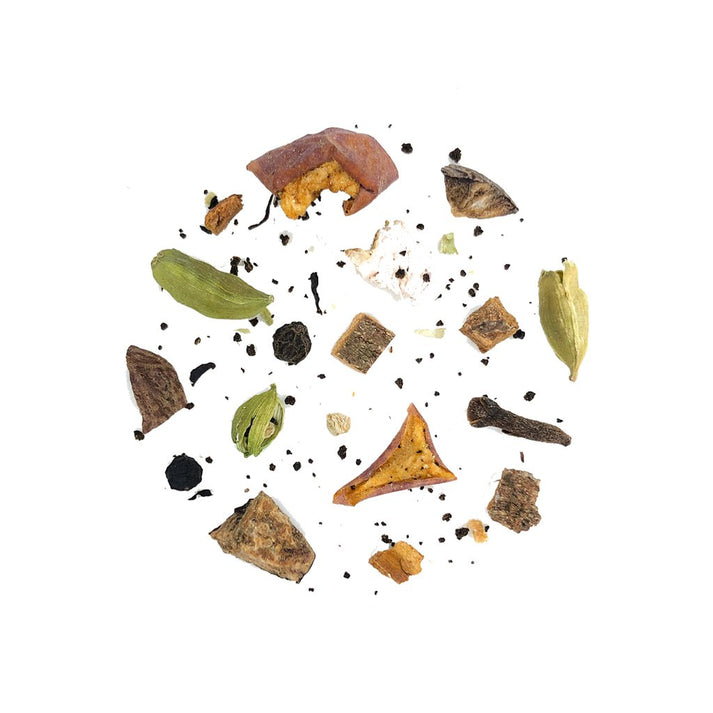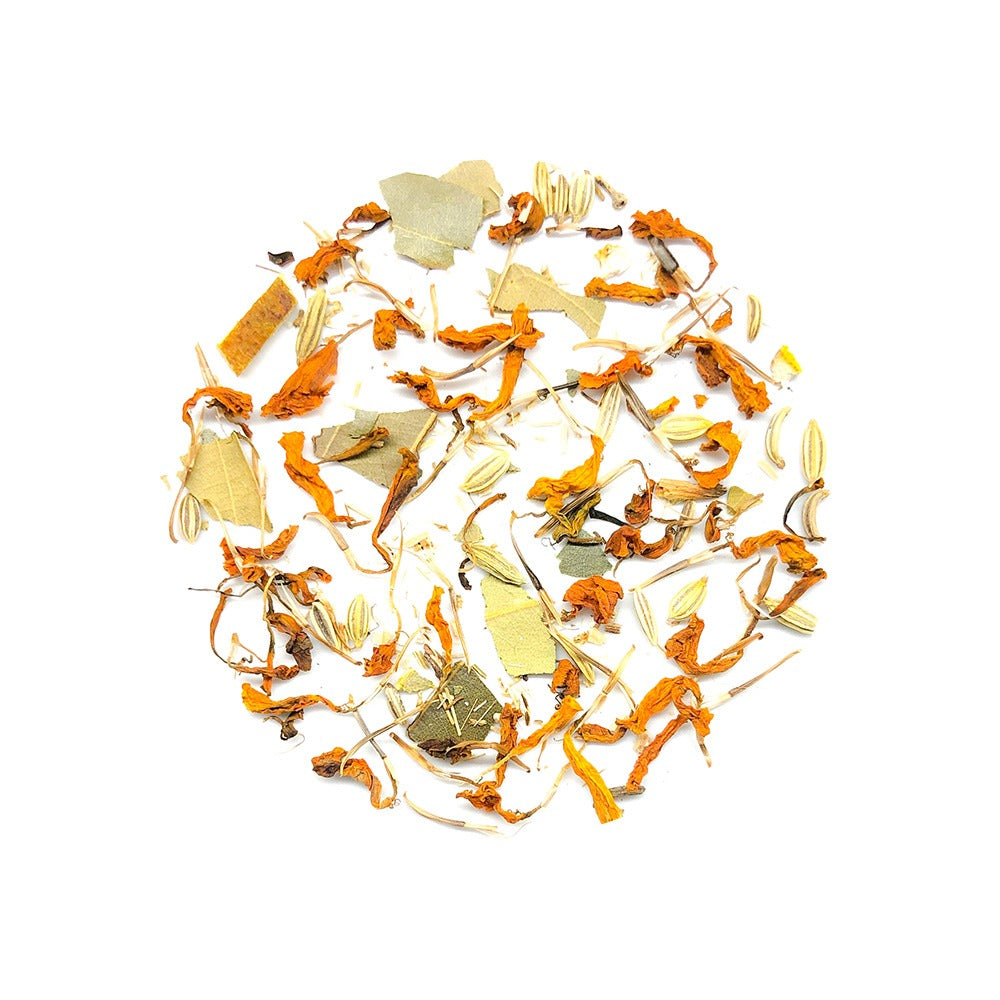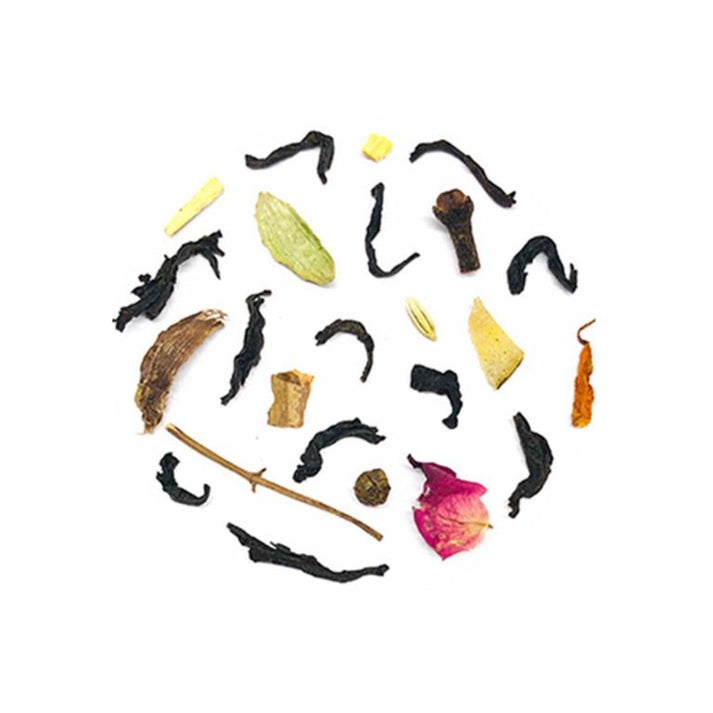The Ultimate Guide to Green Tea: Benefits & Brewing Methods

In the serene hills of Japan and China, a tradition spanning centuries continues to captivate the world. Green tea, once a ceremonial drink reserved for monks and nobility, has evolved into a global phenomenon that bridges ancient wisdom with modern wellness. As more Americans seek natural ways to enhance their health and well-being, green tea has emerged as more than just a beverage – it's become a cornerstone of mindful living.
Have you ever wondered why green tea has maintained its revered status across generations? The answer lies not just in its delicate flavor but in its remarkable journey from leaf to cup and its profound impact on human health.
In this comprehensive guide, we'll explore everything you need to know about green tea – from its rich heritage to its scientific-backed benefits. Whether you're a curious beginner or a tea enthusiast looking to deepen your knowledge, you'll discover:
- The ancient traditions and modern science behind green tea's healing properties
- Expert brewing techniques to unlock the perfect cup every time
- A detailed exploration of various green tea types and their unique characteristics
- Evidence-based health benefits that make green tea a powerful ally in your wellness journey
At TeaAo, we understand that true wellness comes from nature's finest offerings. Our commitment to providing premium, hand-crafted green teas goes beyond just selling a product – it's about preserving centuries-old traditions while embracing sustainable practices that protect our planet. Every tea leaf in our collection is thoughtfully sourced from ethical farms and carefully processed to maintain its natural goodness.
Understanding Green Tea Fundamentals
What sets green tea apart from its counterparts in the vast world of teas? Unlike black or oolong teas, green tea undergoes minimal oxidation, preserving its natural compounds in their most potent form. This distinction is crucial to understanding why green tea holds such a prestigious place in both traditional medicine and modern nutrition.
The story of green tea begins in ancient China, where legend tells of Emperor Shennong discovering tea when leaves accidentally fell into his boiling water. By the 8th century, tea had become so integral to Chinese culture that Lu Yu wrote "The Classic of Tea," the first known book to detail tea cultivation and preparation. When Buddhist monks brought tea to Japan, it sparked a cultural revolution that would refine green tea processing into an art form.
Today's green tea production maintains many traditional methods while incorporating modern innovations for consistency and quality:
- Harvesting: Tea leaves are carefully picked, with the finest varieties selecting only the youngest leaves and buds.
- Heat Treatment: Within hours of harvesting, leaves undergo either steaming (Japanese method) or pan-firing (Chinese method) to prevent oxidation and preserve their natural green color and nutrients.
- Rolling: The leaves are rolled into various shapes, which influences both their appearance and how they release flavors during brewing.
- Drying: Final moisture reduction ensures proper preservation while concentrating the tea's beneficial compounds.
Early research has begun to validate what traditional wisdom has long claimed about green tea's health properties. Modern science reveals that green tea contains:
- Catechins, particularly EGCG (Epigallocatechin gallate), powerful antioxidants that combat cellular damage
- L-theanine, an amino acid that promotes relaxation without drowsiness
- Essential minerals including potassium, magnesium, and manganese
- Trace amounts of vitamins (C, B, E) that support overall health
Recent studies from the National Institutes of Health suggest that regular green tea consumption may contribute to:
- Enhanced metabolic function and weight management
- Improved cardiovascular health
- Better cognitive performance and mental clarity
- Strengthened immune system response
What makes this ancient beverage particularly relevant in today's fast-paced world? The answer lies in its unique combination of gentle stimulation and calming properties – a natural solution for those seeking balanced energy without the jitters often associated with coffee.
Types of Green Tea (Primary Focus on Japanese Varieties)
The world of green tea offers a rich tapestry of flavors, aromas, and experiences. Understanding these varieties can transform your tea-drinking experience from a simple daily ritual into an adventure of sensory discovery. Let's explore the distinctive characteristics of Japanese and Chinese green teas, each offering unique properties and brewing requirements.

A. Japanese Green Teas
In Japan, green tea production is an art form refined over centuries. Japanese teas are known for their steamed processing method, which creates vibrant green leaves and produces teas with fresh, vegetal flavors. Have you ever wondered why Japanese green teas have such a distinctive bright green color?
Sencha (煎茶) The most popular green tea in Japan, representing about 80% of Japanese tea production.
- Appearance: Needle-shaped, deep green leaves
- Flavor Profile: Fresh, grassy, with subtle sweet and umami notes
- Processing: Steamed, rolled, and dried
- Caffeine Content: Moderate (25-35mg per cup)
- Best For: Daily drinking, afternoon refreshment
Gyokuro (玉露) Known as "jade dew," this is Japan's most prestigious tea, grown under shade for 20-30 days before harvest.
- Appearance: Dark green, fine needle-shaped leaves
- Flavor Profile: Rich umami, sweet, complex with marine notes
- Processing: Shade-grown, steamed, and carefully rolled
- Caffeine Content: Higher (35-45mg per cup)
- Best For: Special occasions, focused tea sessions
Bancha (番茶)
- Appearance: Larger, coarser leaves with stems
- Flavor Profile: Light, refreshing with subtle roasted notes
- Processing: Similar to Sencha but using mature leaves
- Caffeine Content: Lower (15-25mg per cup)
- Best For: Casual drinking, evening consumption
Hojicha (ほうじ茶)
- Appearance: Reddish-brown leaves
- Flavor Profile: Roasted, nutty, caramel notes
- Processing: Roasted green tea (usually Bancha)
- Caffeine Content: Very low (7-15mg per cup)
- Best For: Evening drinking, children, caffeine-sensitive individuals
Genmaicha (玄米茶)
- Appearance: Green tea leaves mixed with roasted brown rice
- Flavor Profile: Nutty, toasted with a subtle sweetness
- Processing: Green tea blended with roasted rice
- Caffeine Content: Low to moderate (20-30mg per cup)
- Best For: Morning or afternoon drinking, meal accompaniment
Matcha (抹茶) The only green tea consumed as a powder, where the entire leaf is ingested.
- Appearance: Bright green, fine powder
- Flavor Profile: Rich, creamy, intense umami
- Processing: Stone-ground shade-grown tea leaves
- Caffeine Content: High (50-70mg per serving)
- Best For: Traditional tea ceremonies, lattes, culinary uses
B. Chinese Green Teas
Chinese green teas offer a different profile from their Japanese counterparts, typically pan-fired rather than steamed, resulting in more subtle, sweet flavors.
Dragon Well (Longjing, 龙井) China's most famous green tea, produced in Hangzhou.
- Appearance: Flat, sword-shaped leaves
- Flavor Profile: Sweet, chestnut-like with a gentle finish
- Processing: Pan-fired and pressed flat
- Caffeine Content: Moderate (25-35mg per cup)
- Best For: Appreciating Chinese tea craftsmanship
Gunpowder (珠茶)
- Appearance: Rolled into small, tight pellets
- Flavor Profile: Bold, slightly smoky
- Processing: Rolled into pellets and dried
- Caffeine Content: Moderate to high (35-40mg per cup)
- Best For: Those who enjoy stronger flavors
Bi Luo Chun (碧螺春)
- Appearance: Tiny, spiral-shaped leaves
- Flavor Profile: Delicate, fruity, floral
- Processing: Pan-fired and hand-rolled
- Caffeine Content: Moderate (25-35mg per cup)
- Best For: Special occasions, appreciating subtle flavors
When selecting a green tea variety, consider:
- Your preferred flavor profile (vegetal, sweet, roasted, etc.)
- Desired caffeine content
- Time of day you'll typically drink it
- Your brewing setup and expertise level
- Your budget (premium teas like Gyokuro command higher prices)
Did you know that the same tea plant (Camellia sinensis) produces all these varieties? The differences in flavor and appearance come from factors including:
- Growing conditions (shade vs. sun)
- Harvest timing
- Processing methods
- Regional terroir
- Craftsmanship
The Health Benefits of Green Tea (Deep Dive)
In recent years, scientific research has validated what traditional medicine has known for centuries: green tea is more than just a pleasant beverage. It's a powerful elixir packed with compounds that can significantly impact our health and well-being. But what makes this ancient drink so remarkable in our modern world?
Antioxidant Powerhouse: Understanding Catechins
At the heart of green tea's health benefits lies its impressive antioxidant profile, particularly its rich concentration of polyphenols called catechins. The star player among these is EGCG (Epigallocatechin gallate), which research suggests is up to 100 times more effective than vitamin C at neutralizing free radicals.
A 2023 study published in the Journal of Nutritional Biochemistry found that regular green tea consumption provides:
- Protection against cellular damage from oxidative stress
- Support for the body's natural detoxification processes
- Enhanced cellular repair and regeneration
Weight Management and Metabolic Health
Green tea's relationship with weight management is well-documented through numerous clinical studies. Research from the American Journal of Clinical Nutrition demonstrates that green tea can:
- Boost metabolic rate by 4-5%
- Increase fat oxidation by 10-17%
- Target specific fat deposits, particularly in the abdominal area
The synergistic effect of caffeine and catechins creates what researchers call a "thermogenic effect," helping to:
- Enhance energy expenditure
- Improve fat utilization during exercise
- Support healthy blood sugar levels
Mental Clarity and Cognitive Function
What sets green tea apart in terms of mental benefits is its unique combination of L-theanine and caffeine. This powerful duo works together to:
- Promote alert calmness without jitters
- Enhance memory and reaction time
- Support sustained focus and concentration
A groundbreaking 2024 study in the Journal of Neural Science found that regular green tea drinkers demonstrated:
- Better memory retention
- Improved multitasking abilities
- Enhanced problem-solving capabilities
- Reduced mental fatigue during complex tasks
Heart Health Benefits
Cardiovascular health remains a top concern in modern society, and green tea offers promising support in this area. Clinical research indicates that regular consumption can:
- Support healthy blood pressure levels
- Help maintain healthy cholesterol balance
- Promote arterial flexibility
- Support healthy circulation
Immune System Support
Green tea's impact on immune function is particularly relevant in today's health-conscious world. Research has shown it can:
- Support the production and activity of immune cells
- Help maintain the body's natural defense mechanisms
- Provide antimicrobial properties
- Support respiratory health
Mastering the Art of Brewing Green Tea
The difference between a mediocre cup of green tea and an exceptional one often lies in the brewing technique. Let's explore how to consistently create the perfect cup.
Water Temperature Guidelines
Temperature control is crucial for green tea brewing. Using water that's too hot can result in bitter, astringent tea. Here's your precise temperature guide:
Japanese Green Teas:
- Gyokuro: 122-140°F (50-60°C)
- Sencha: 158-167°F (70-75°C)
- Bancha: 167-176°F (75-80°C)
- Hojicha: 176-185°F (80-85°C)
Chinese Green Teas:
- Dragon Well: 167-176°F (75-80°C)
- Gunpowder: 176-185°F (80-85°C)
- Bi Luo Chun: 158-167°F (70-75°C)
Steeping Times for Optimal Flavor
Each variety requires specific steeping times to achieve its optimal flavor profile:
First Infusion Guidelines:
- Gyokuro: 90-120 seconds
- Sencha: 60-90 seconds
- Dragon Well: 2-3 minutes
- Bancha: 30-60 seconds
Essential Equipment
To brew green tea properly, you'll need:
Basic Setup:
- Temperature-controlled kettle
- Quality brewing vessel (ceramic or glass preferred)
- Timer
- Proper cups for serving
Advanced Setup (Optional):
- Kyusu (Japanese teapot)
- Cooling vessel (Yuzamashi)
- Tea scale for precise measurements
- Water filter system
Common Brewing Mistakes to Avoid
Using Boiling Water
- Impact: Destroys delicate compounds and creates bitterness
- Solution: Allow water to cool to appropriate temperature
Incorrect Leaf-to-Water Ratio
- Impact: Results in weak or overly strong tea
- Solution: Use 2-3 grams of tea per 100ml of water
Poor Quality Water
- Impact: Masks tea's subtle flavors
- Solution: Use filtered or spring water
Improper Storage of Tea
- Impact: Degraded flavor and aroma
- Solution: Store in airtight containers away from light and moisture
Advanced Brewing Techniques
For premium teas like Gyokuro and high-grade Sencha:
Pre-brewing preparation:
- Warm all tea vessels with hot water
- Measure tea precisely using a scale
- Pre-warm cups to maintain optimal drinking temperature
Multiple Infusion Technique:
- First infusion: Follow standard guidelines
- Second infusion: Increase temperature by 5-10°F, reduce steeping time by 15 seconds
- Third infusion: Increase temperature by another 5-10°F, adjust steeping time based on desired strength
Storage and Preservation: Protecting Your Green Tea Investment
Proper storage of green tea isn't just about maintaining freshness—it's about preserving the delicate compounds that make this beverage so extraordinary. Let's explore how to protect your tea investment and ensure every cup delivers the experience you deserve.

Proper Storage Containers: The Foundation of Freshness
The choice of storage container can make or break your tea's longevity. The ideal container creates a protective barrier between your tea and environmental factors that can degrade its quality. Premium tea deserves premium storage solutions, and here's what you should look for:
Traditional Japanese tea tins (Chazutsu) feature a double-lid design that creates an almost perfect seal while allowing the tea to breathe just enough. If you don't have access to traditional containers, look for:
- Ceramic containers with airtight seals
- Opaque glass jars with secure lids
- Specialized tea storage tins with inner seals
Avoid plastic containers, as they can impart unwanted flavors and don't provide adequate protection against environmental factors.
Temperature and Humidity: The Silent Tea Destroyers
Green tea's greatest enemies are heat, moisture, and dramatic temperature fluctuations. The ideal storage environment closely mirrors the conditions tea masters use in their storage facilities:
Room temperature should remain steady between 60-75°F (15-24°C). Humidity levels should stay below 55% to prevent moisture from compromising the tea's integrity. This is why storing tea in your kitchen cabinet above the stove or in a sunny windowsill can quickly degrade even the finest teas.
Shelf Life: Understanding the Timeline of Freshness
While green tea doesn't technically "expire," its quality and health benefits diminish over time. Here's what you can expect:
Loose Leaf Green Tea:
- Premium grade: Peak freshness 4-6 months
- Standard grade: Best within 6-8 months
- Maximum storage time: Up to 12 months
Matcha:
- Ceremonial grade: 4-6 weeks after opening
- Culinary grade: 6-8 weeks after opening
- Unopened: Up to 12 months if properly stored
Signs Your Tea Is Past Its Prime
Learning to recognize quality degradation helps you enjoy your tea at its best. Watch for these indicators:
Visual Changes
- Color dulling from vibrant green to olive or brown
- Excessive dust or powder at the bottom of the container
- Clumping or moisture spots
Aroma Changes
- Loss of fresh, vegetal scent
- Development of musty or stale odors
- Absence of the tea's characteristic fragrance
Taste Changes
- Flat or muted flavor profile
- Increased bitterness or astringency
- Loss of subtle flavor notes
Choosing Quality Green Tea: A Guide to Premium Selection
The Art of Identifying Premium Tea
Premium green tea tells its story through appearance, aroma, and origin. When evaluating tea quality, consider:
Leaf Appearance: First, examine the dry leaves. Premium tea leaves should be whole or largely intact, uniform in size, and display a consistent colour. Look for leaves that are crisp and clean, without dust or debris.
Aroma Profile: Quality green tea should have a fresh, inviting scent even before brewing. Different varieties will have distinct aromatic profiles:
- Sencha should offer fresh, oceanic notes
- Gyokuro presents sweet, umami-rich aromas
- Dragon Well carries subtle chestnut fragrances
Understanding Organic Certification
Organic certification goes beyond avoiding pesticides. In the tea world, it represents a commitment to:
- Sustainable farming practices
- Environmental stewardship
- Worker Welfare
- Processing integrity
However, remember that some exceptional small farms practice organic methods but haven't pursued certification due to cost constraints. This is where knowing your tea's origin story becomes crucial.
Decoding Tea Labels: What Really Matters
Modern tea labels can be confusing, but focusing on key information helps make informed choices:
Essential Information:
- Harvest date or processing date
- Origin region (not just country)
- Grade or classification
- Processing method
- Storage recommendations
Price vs. Quality: Making Smart Investments
While premium tea commands higher prices, the relationship between cost and quality isn't always linear. Consider these factors:
Investment Considerations:
- Cost per serving rather than package price
- Reinfusion potential of higher-grade teas
- Seasonal variations in pricing
- Origin and processing method impacts
TeaAo's Quality Standards: Our Commitment to Excellence
At TeaAo, our quality standards reflect our dedication to bringing you the finest green teas while supporting sustainable practices:
Our Selection Process:
- Direct relationships with artisanal tea farmers
- Regular quality control testing
- Seasonal curation of offerings
- Sustainability certification requirements
- Comprehensive traceability programs
Conclusion: Embracing the Green Tea Journey
As we conclude our comprehensive exploration of green tea, it's clear that this remarkable beverage offers far more than just a moment of refreshment. From its ancient origins to its modern-day applications, green tea stands as a testament to the enduring wisdom of traditional practices validated by contemporary science.
Key Insights for Your Green Tea Journey
Throughout this guide, we've uncovered the multifaceted world of green tea, from its profound health benefits to the artistry of proper brewing. We've learned that the perfect cup of green tea is a harmony of quality leaves, proper temperature, and mindful preparation.
Whether you're seeking mental clarity, weight management support, or simply a moment of tranquility in your day, green tea offers a natural solution backed by centuries of wisdom and modern research.
The journey from novice to tea connoisseur is one of continuous discovery. Remember that each variety of green tea tells its own story – from the shaded leaves of Gyokuro to the pan-fired essence of Dragon Well.
Your appreciation for these subtle differences will grow with each mindfully prepared cup.
Taking the Next Step with TeaAo
Now that you understand the nuances of green tea, we invite you to experience the difference that premium, sustainably sourced tea can make in your daily ritual. At TeaAo, we've curated a selection that represents the finest examples of each green tea variety we've discussed.
For those beginning their green tea journey, we recommend starting with our Signature Sencha – a perfectly balanced Japanese green tea that embodies the fresh, umami-rich character that makes Japanese teas so beloved. Its moderate caffeine content and versatile brewing parameters make it an ideal daily companion.
Your Invitation to Tea Excellence
We believe that every cup of tea is an opportunity to pause, reflect, and nurture your wellbeing. To support you in this journey, we're offering our readers an exclusive opportunity to explore our curated selection:
Visit our website at TeaAo.com and use code "TeaAoFirst20" to get 20% off on your first purchase.
Final Thoughts
Remember that your relationship with green tea is personal and evolving. Whether you're seeking its health benefits, cultural connection, or simply the pleasure of a perfectly brewed cup, green tea offers something for everyone.
We at TeaAo are honored to be part of your tea journey and look forward to sharing our passion for exceptional green tea with you.
The world of green tea awaits – isn't it time you discovered your perfect cup?
Visit Green Tea Collection today to begin your journey into the extraordinary world of premium green tea, where tradition meets modern wellness, and every sip tells a story of artisanal craftsmanship and sustainable practices.







